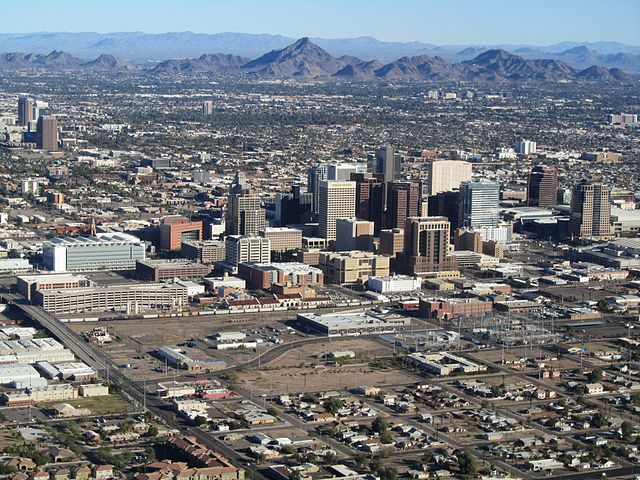Published on January 25, 2021

Mario Wilcox won’t set out in the summer without an emergency kit in his car trunk: a cooler with an ice pack and a blanket. He learned this improvised life saver from his time in the Iraq and Afghanistan wars; ice and a wet cloth can cool down an overheated body. Now he finds it vital in the intensifying heat of Fort Pierce, Florida, and especially his heat-stressed neighborhood.
More than 2,000 miles away in Phoenix, Arizona, Grace Salinas monitors the street outside her window in a public housing complex when summer temperatures reach triple digits. A community leader in the area southwest of downtown, Salinas stocks cold water bottles for anyone she sees struggling with the heat, a situation growing more common each year.
Heat-related illnesses are soaring in Arizona and Florida as the planet warms and temperatures rise. Among the hottest states in the country, none saw a sharper spike in summertime temperatures over the last century than these two. Already, Arizona is considered the hottest state in the US, and Phoenix the hottest city, with more than 140 days over 100 degrees Fahrenheit last year alone. In Florida, the combination of heat and humidity makes it one of the nation’s most dangerous places, according to a recent study.
Poor communities are bearing the brunt of sickening heat in these states, an analysis by Columbia Journalism Investigations and the Center for Public Integrity found. Federal data capturing most emergency room visits and hospitalizations in Arizona and Florida reveal higher rates of heat-related illnesses in areas with less income. The data, never before made public at the zip code level, also show that the highest rates of heat-related illnesses are in neighborhoods with a history of racial segregation. Experts say racist policies of the past created conditions, never corrected, that make heat more dangerous for people there today.
“You would never decide not to heat your home because it is only useful in the winter,” said Howard Frumkin of the University of Washington School of Public Health, who headed the U.S. Centers for Disease Control and Prevention’s climate program in the mid-2000s. Likewise, the best solutions for extreme heat—planting more trees, creating buddy systems—must be implemented consistently to be effective. If “efforts lag for months at a time,” he said, “then you lose ground.”
Adrienne Hollis, a researcher at the Union of Concerned Scientists, studies the effects of the changing climate on the health of historically disadvantaged populations. She notes that communities of color are often the hardest hit by extreme heat. According to her calculations, US counties where African Americans or Latinos represent at least a quarter of the population—most in the South—have faced more days with temperatures above 100 degrees Fahrenheit over a three-decade period: an average of 18 and 13 days per year, respectively, as compared with roughly seven days a year for the rest of the country.
“Zip codes do determine your health,” Hollis said, “and most of that is because of structural racism.”
Continue reading at MotherJones.
Originally written by Sofia Moutinho and Elisabeth Gawthrop for MotherJones.